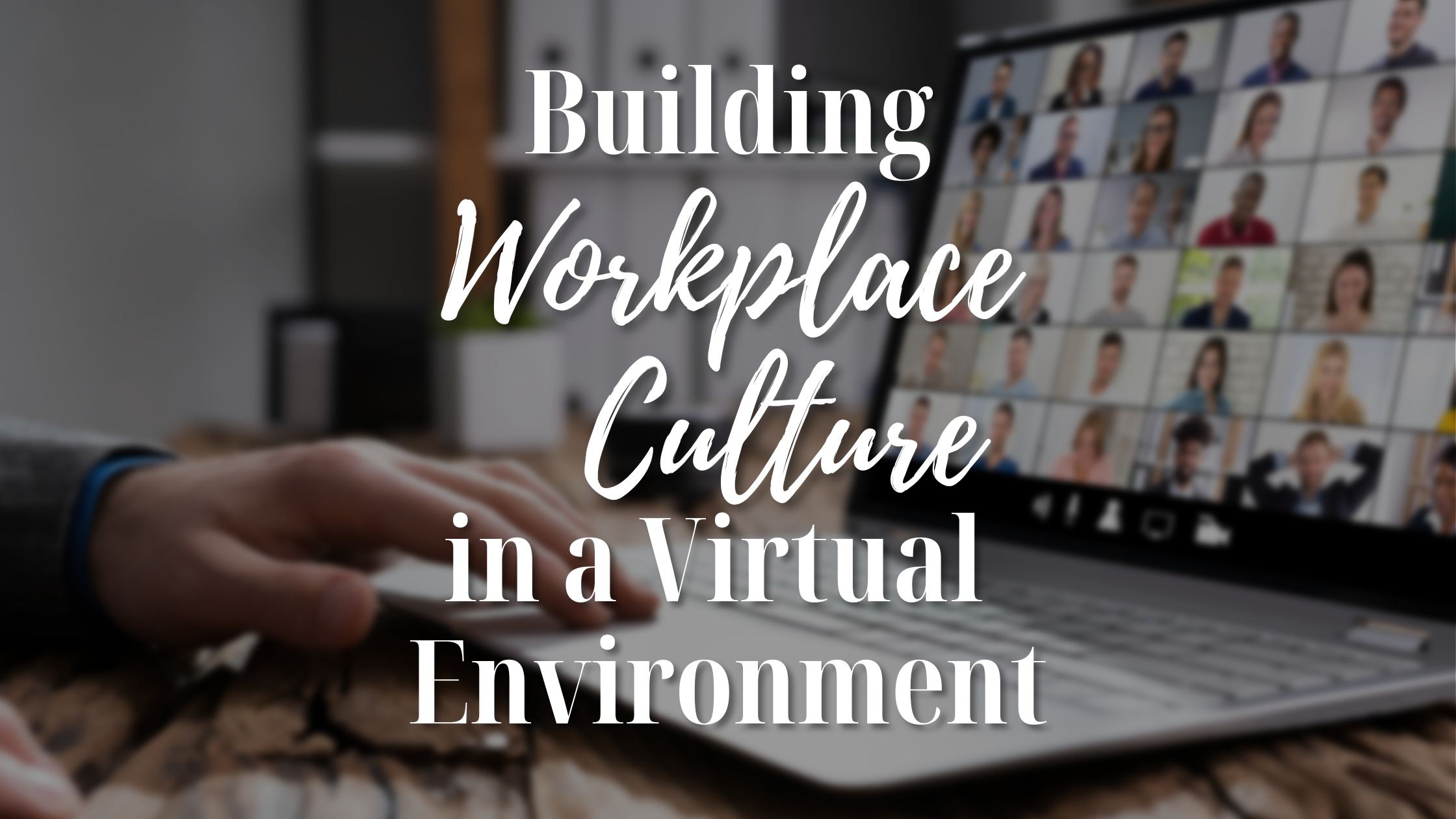Building Workplace Culture in a Virtual Environment

Article originally published by SHRM.com on June 21, 2022. Written by Nicole Lewis.
Can technology adequately support company culture in a hybrid or remote work environment? That’s the question being asked by HR stakeholders now that virtual work is here to stay and as tech companies are introducing new features to address the lack of in-office spontaneity that can encourage free-flowing creativity while staving off employee burnout.
Since the pandemic began, company culture has been under pressure. The Great Resignation, 1 million U.S. deaths from COVID-19, racial injustice and the fight for union representation at several prominent organizations are just some of the societal trends that have raised workers’ concerns and suspicions about how far companies will go to support their employees.
At the same time, a new wave of technological advancements has introduced new opportunities to capture workers’ behaviors, their patterns of thinking and their sentiments. Chief among those technologies is artificial intelligence.

Machine learning allows the technology to adapt to the individual, as opposed to previous “big data” tools that required workers to adapt to the technology, observed Paul Rubenstein, chief people officer at Visier, a people analytics company headquartered in Vancouver, British Columbia, Canada.
“We have to start seeing ourselves in the technology,” he said. “I don’t think it’s about technology replacing human interaction. I think it’s about us using the technology to its fullest rather than being constrained or trapped by the technology and the way someone else designed it,” Rubenstein said.
He added that a shift has occurred in the types of data that companies can collect on employees. Employers long have collected data such as when employees started their day, what they are working on and how many hours they worked, but this kind of data is not enough to effectively create a positive work experience, especially in the virtual work world.
“Employees should be able to look at data and see that they are not connected to enough people or they only talk to the same people or they are isolated,” Rubenstein said. “People need to see themselves in the data because it holds a mirror up to them. That’s the first big shift. We have to have data gathering and data dissemination that helps everyone see a more human truth.”
Using employee data to make decisions will be critical for employers as they figure out the best way to improve the remote-worker experience, especially if employers want to raise engagement and get the best performance from their employees.
In a survey conducted by Workday, 268 HR leaders were asked to rank the most important issues that they think will accelerate digital transformation across the wider business: 50 percent cited positive employee experiences as the most important issue. In second place, 45 percent of respondents said an increased focus on diversity, equity and inclusion is the most important.
To create positive experiences, technology companies are focusing on providing digital solutions that collapse the distance between employees and employers and digitize the aspects of work that occur during those unstructured, spur-of the-moment encounters. The aim is to incorporate human behavior into their software.
For example, Zoom has added gesture recognition features that allow users to raise their hands or give a thumbs-up when users want to express their feelings without interrupting the speaker.
Salesforce’s Slack recently introduced huddles, an audio-only conversation feature that the company says is designed to re-create—to the extent that technology can—the spontaneity of a quick in-office watercooler-type meeting or a pause at a colleague’s desk to ask a question. The tool can also be used to help re-create a physical space where entire teams can convene, like marketing teams that often work together throughout the day.

Oracle recently introduced the Oracle ME (My Experience) platform, which consists of six modules that target corporate culture. The tools offer workflow guidance to help workers complete professional and personal activities ranging from onboarding or transferring to a new role to getting married or having a baby.
Additionally, Oracle ME makes it easier for employees to foster continuous engagement between employees and managers. The platform also helps to keep the workforce informed of changes, reinforce organizational culture and nurture connections among employees. This ultimately enhances workplace belonging and development.
According to Zachary Chertok, research manager in employee experience at Needham, Mass.-based International Data Corp., when employers think about elements of the physical workplace, they have to consider how they’ll equip both the organization and its employees with the tools to stay connected, engaged, collaboratively innovative and creative in problem-solving, regardless of the employees’ work environment.
Employees, Chertok said, have to think about how they can work in a way that lets them set the pace, tone and equation for what work/life balance means for them.
“We are in an age where, at a strategic level, we are looking at the role that technology and, to a slightly lesser extent, data and prescriptive services plays in guiding organizations to that personal equity,” Chertok said.
He added, “It’s no longer about one policy for everybody. It’s about, ‘Where can we introduce flexibility within the job and office and work requirements at the role level and at the personal level?’ and making sure that those resources and choices are as equitably distributed as possible.”
In the effort to grow a company culture that will thrive in the remote and hybrid work model, Rubenstein said, technology will have to do a better job of capturing and managing the kinds of spontaneous experiences that employees have with each other in traditional office environments.
“We need digital technologies that see how employees interact so that we can create an actual map of interactions and make sure that we are not leaving the best people behind,” Rubenstein said.